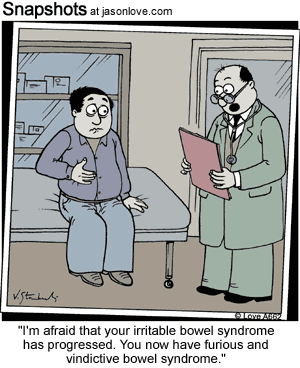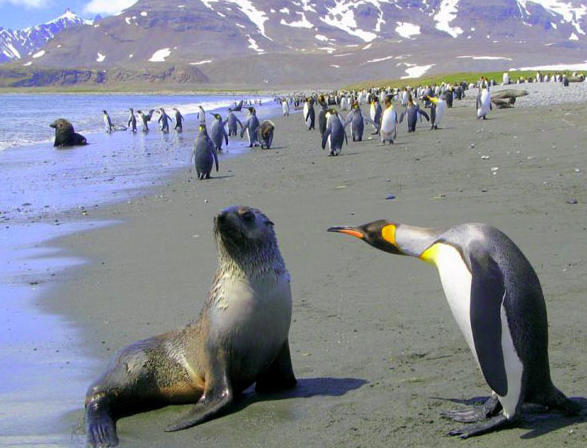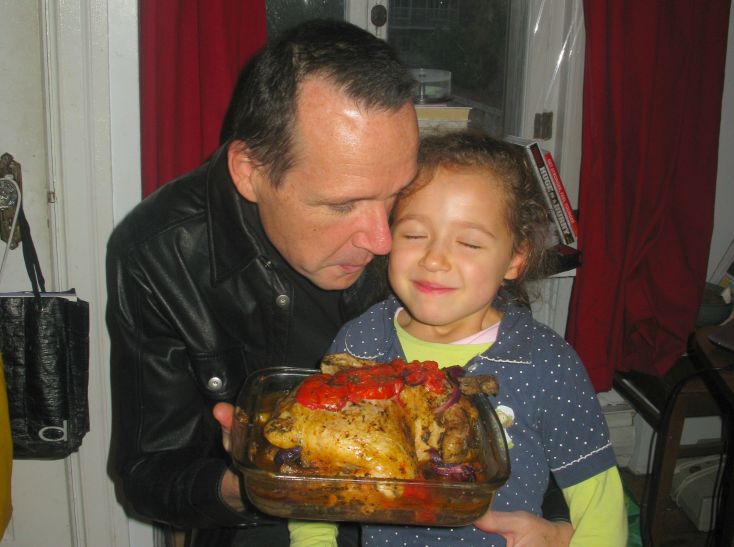[1] Interesting posts this week: Melissa McEwen assures us: Robb Wolf is not Satan. Kurt Harris’s reader Tara makes the most persuasive case I’ve seen for grass-fed meat through pictures. Emily Deans compares eating disorders to addictions.
[2] Kurt Harris re-re-brands: Paleonu became PaNu became Paleo 2.0 becomes Archevore.com, archevore being a neologism for “one who eats of the essentials.”
Well, it’s more euphonious than “EM2vore,” for “one who eats of the evolutionary metabolic milieu.” A more descriptive name might have been “nontoxivore,” since Kurt’s primary theme is avoidance of “neolithic agents of disease – wheat, excess fructose and excess linoleic acid.”
It will be interesting to see where he’s taking this. Are Archevorean essentials the same as PaNu?
[3] Posts of the week: Chris Masterjohn posts always deserve special notice. On Tuesday he continued his important series investigating whether wheat causes leaky gut, which will trigger a few edits in the next edition of our book. I was asked about this last Saturday and said:
There’s no question that gluten causes problems in non-celiacs – that’s the main result of the Fasano paper Chris cites, and also of papers cited by Andrew Badenoch in a post I linked today. It’s just that leaky gut does not appear to be one of those problems.
It certainly doesn’t mean that wheat is safe to eat.
I may add that pathogens and other food toxins – even perhaps other wheat toxins besides gluten – can cause a leaky gut, providing a way for wheat toxins to enter the body. Moreover, some wheat toxins don’t even need a leaky gut to enter the body. As we discuss in the book (p 134), wheat germ agglutinin can cross barriers via transcytosis, enabling them to enter the body even if the intestinal barrier is intact. Finally, wheat toxins can damage the gut without entering the body at all. So there are many pathways through which wheat toxicity can matter.
Chris had another outstanding post on Friday, about fatty liver disease.
[4] Rosacea is an infection of the skin and vessels: That’s why it can be transmitted through facial skin grafts.
Source: Kanitakis J. Transmission of Rosacea from the Graft in Facial Allotransplantation. Am J Transplant. 2011 Mar 28. [Epub ahead of print] http://pmid.us/21443678.
[5] Special offer: The folks at Emerald Forest Xylitol noticed that we recommend their product and would like to give a special offer to PerfectHealthDiet.com readers. Use the coupon code FIRST to get 10% off all products at www.emeraldforestxylitol.com.
Also, Matt Willer of Emerald Forest Xylitol is looking for recipes that include Xylitol for use in his newsletter. If you have a recipe, send it to matt@xylitolusa.com.
[6] Animal photos: If you saw a grizzly charging straight toward you, would you stop to take this photo?
Photographer Alex Wypyszinski did in Yellowstone. The grizzly was chasing an injured bison, and the pair went right past him:
For the full story, see Grizzly versus Bison: the rest of the story (Drew Trafton, 10/29/10, KRTV, Great Falls, Montana). Hat tip Orrin Judd.
[7] Don’t hate the sun: From Britain comes the sad story of a 21-year-old who “hated the sun” and died of skin cancer at 21.
Dr. John Briffa has a summary of the relevant science.
[8] I couldn’t disagree more: Mike the Mad Biologist and Newt Gingrich are dead wrong in their prescription for research funding. We don’t need more concentrated funding, we need more distributed, decentralized funding that is patient-driven, not top-scientist driven.
Discovering cures can be cheap – if you’re looking in the right place. If you’re looking in the wrong direction, the cost of a cure may be infinite.
[9] I hate when that happens:
(Via Stephen Wangen)
[10] Are choline supplements toxic?: At the very beginning of the book (p 3) we state that “the perfect diet should … deliver … no excess nutrients for pathogens.”
Later in the book we give examples of nutrients that, in excess, primarily benefit pathogens: niacin (the primary vitamin for bacteria), iron (critical for metabolism of most pathogens, and a component of bacterial biofilms), and calcium (a component of bacterial biofilms). These are on our list of micronutrients we recommend not supplementing (beyond a multivitamin).
Two readers, Leonardo and Patricia (thank you both!), emailed us about a ScienceDaily article suggesting that choline, one of the micronutrients we most frequently recommend, should be added to this list:
When fed to mice, lecithin and choline were converted to a heart disease-forming product by the intestinal microbes, which promoted fatty plaque deposits to form within arteries (atherosclerosis); in humans, higher blood levels of choline and the heart disease forming microorganism products are strongly associated with increased cardiovascular disease risk.
The story didn’t have enough information, so I downloaded the paper. The paper notes that choline is metabolized by gut bacteria to a gas with a fishy odor called TMA, which is then oxidized in the liver to a compound called TMAO:
Briefly, initial catabolism of choline and other trimethylamine-containing species (for example, betaine) by intestinal microbes forms the gas trimethylamine (TMA), which is efficiently absorbed and rapidly metabolized by at least one member of the hepatic flavin monooxygenase (FMO) family of enzymes, FMO3, to form trimethylamine N-oxide (TMAO).
They showed that (a) feeding phosphatidylcholine from egg yolk to mice led to increased blood levels of TMAO and that (b) in a separate study, people with atherosclerosis have elevated blood levels of TMAO, choline, and trimethylglycine.
Supplementing choline at 10 times normal levels to Apoe-knockout mice led to increased TMAO but not choline in blood:
Atherosclerosis-prone mice (C57BL/6J Apoe-/-) at time of weaning were placed on either normal chow diet (contains 0.08–0.09% total choline, wt/wt) or normal chow diet supplemented with intermediate (0.5%) or high amounts of additional choline (1.0%) or TMAO (0.12%)….
Analysis of plasma levels of choline and TMAO in each of the dietary arms showed nominal changes in plasma levels of choline, but significant increases of TMAO in mice receiving either choline or TMAO supplementation (Supplementary Fig. 10).
Serum TMAO levels were correlated with atherosclerotic plaque size and with macrophages turning into foam cells:
[A]ll dietary groups of mice revealed a significant positive correlation between plasma levels of TMAO and atherosclerotic plaque size (Fig. 3e and Supplementary Fig. 9b).
TMA (a gas with a fish odor) has to be converted in the liver to the toxic TMAO in order to produce these bigger atherosclerotic lesions. This conversion happened mainly in mice with low HDL:
Interestingly, a highly significant negative correlation with plasma high-density lipoprotein (HDL) cholesterol levels was noted in both male and female mice (Fig. 4b and Supplementary Fig. 12, middle row).
So if you’re an Apoe(-/-) mouse and eat ten times normal choline, if you have high HDL your arteries are safe but you smell fishy; if you have low HDL you smell fine but your arteries get injured.
What does this tell us about choline supplementation?
For humans with working ApoE alleles, I doubt we can infer anything yet.
For Apoe(-/-) mice fed ten times normal choline, I would suggest shooting for low HDL while dating, then high HDL after marriage.
Reference: Wang Z et al. Gut flora metabolism of phosphatidylcholine promotes cardiovascular disease. Nature, 2011; 472 (7341): 57 DOI: 10.1038/nature09922
[11] One-upping the standing desk: Jamie Scott has a walking desk:
[12] Why is aspirin toxic to cats?: In the book we mention that plant foods always contain toxins, but animal foods don’t – because in poisoning us, animals would poison themselves. As we point out in the book, Bruce Ames and Lois Gold estimate that over 99% of the toxins humans ingest come from plant foods – not industrial or environmental toxins.
One of the main functions of the liver is detoxification. A healthy liver enables us to consume plant foods.
But what happens to the livers of animals that never eat plant foods? If they and their descendants avoid plant foods for millions of years, how would their livers evolve?
The answer is in a fascinating piece by Ed Yong at Discover blogs: “Why Is Aspirin Toxic to Cats?”. The puzzle:
[C]ats are extremely sensitive to aspirin, and even a single extra-strength pill can trigger a fatal overdose.
Some scientists have been investigating this puzzle since the early 1990s. It turns out that all 18 of 18 species of cat studied, including housecats, cheetahs, servals, and tigers, have crippling mutations in a gene involved in liver detoxification. The same gene is also lost in other hypercarnivores, including the brown hyena and the northern elephant seal.
Mr. Yong explains:
Like many other “detoxifying” proteins, UGT1A6 evolved to help animals cope with the thousands of dangerous chemicals in the plants they eat….
But if an animal’s menu consists largely of meat, it has little use for these anti-plant defences. The genes are dispensable…. [T]he ancestral cats gradually built up mutations that disabled their UGT1A6 gene. Evolution is merciless that way – it works on a “use it or lose it” basis.
So – millions of years of hypercarnivory will disable the liver’s ability to metabolize toxins.
Pet owners, be kind to your cats: Don’t feed them plants!
And a new zero-carb danger: After ten thousand generations, your descendants may be unable to take aspirin.
Reference: Shrestha B et al. Evolution of a Major Drug Metabolizing Enzyme Defect in the Domestic Cat and Other Felidae: Phylogenetic Timing and the Role of Hypercarnivory. PLoS One. 2011 Mar 28;6(3):e18046. http://pmid.us/21464924.
[13] Not the weekly video: Best mobile phone commercial I’ve seen:
[14] Weekly video: I grew up near the University of Connecticut campus and have been a fan of their men’s basketball team since the late 1970’s. What Jim Calhoun has done there, building a minor program to national prominence and three championships, is one of the great accomplishment in coaching history. And this year’s team was a minor miracle: with unheralded and under-recruited freshmen playing half the minutes, they won a national championship.
Every year CBS makes a video montage of the tournament. Here it is, One Shining Moment:

























Recent Comments